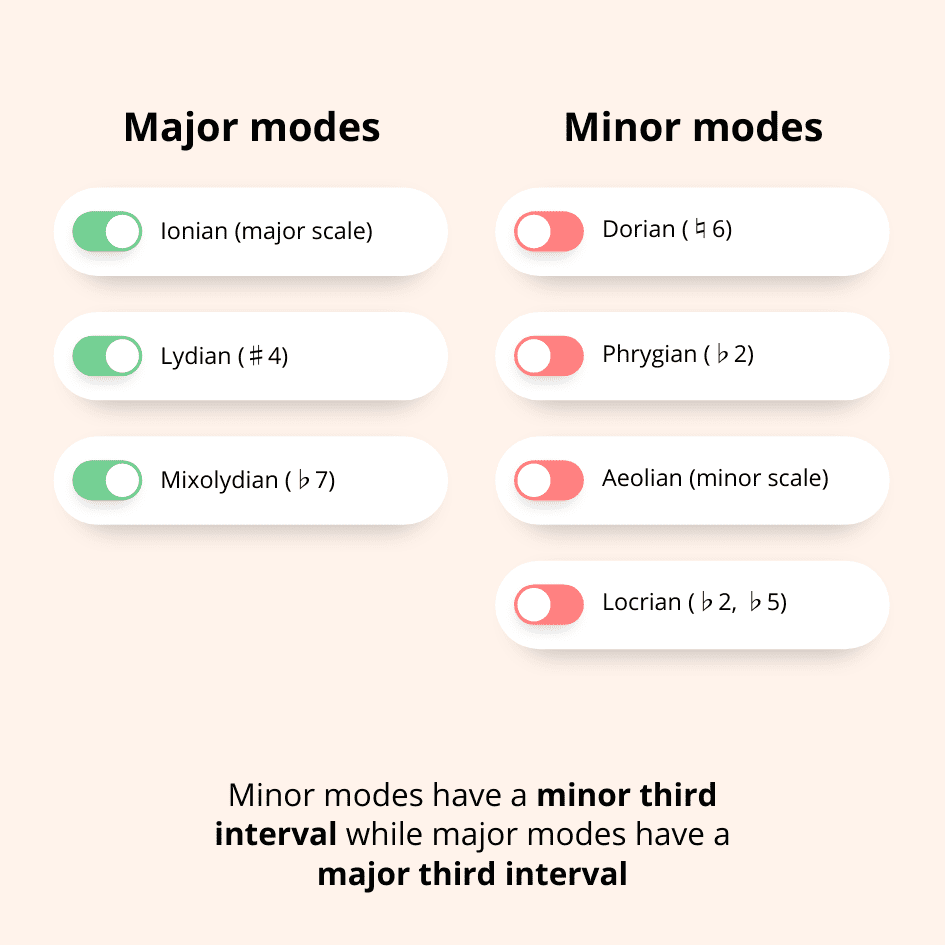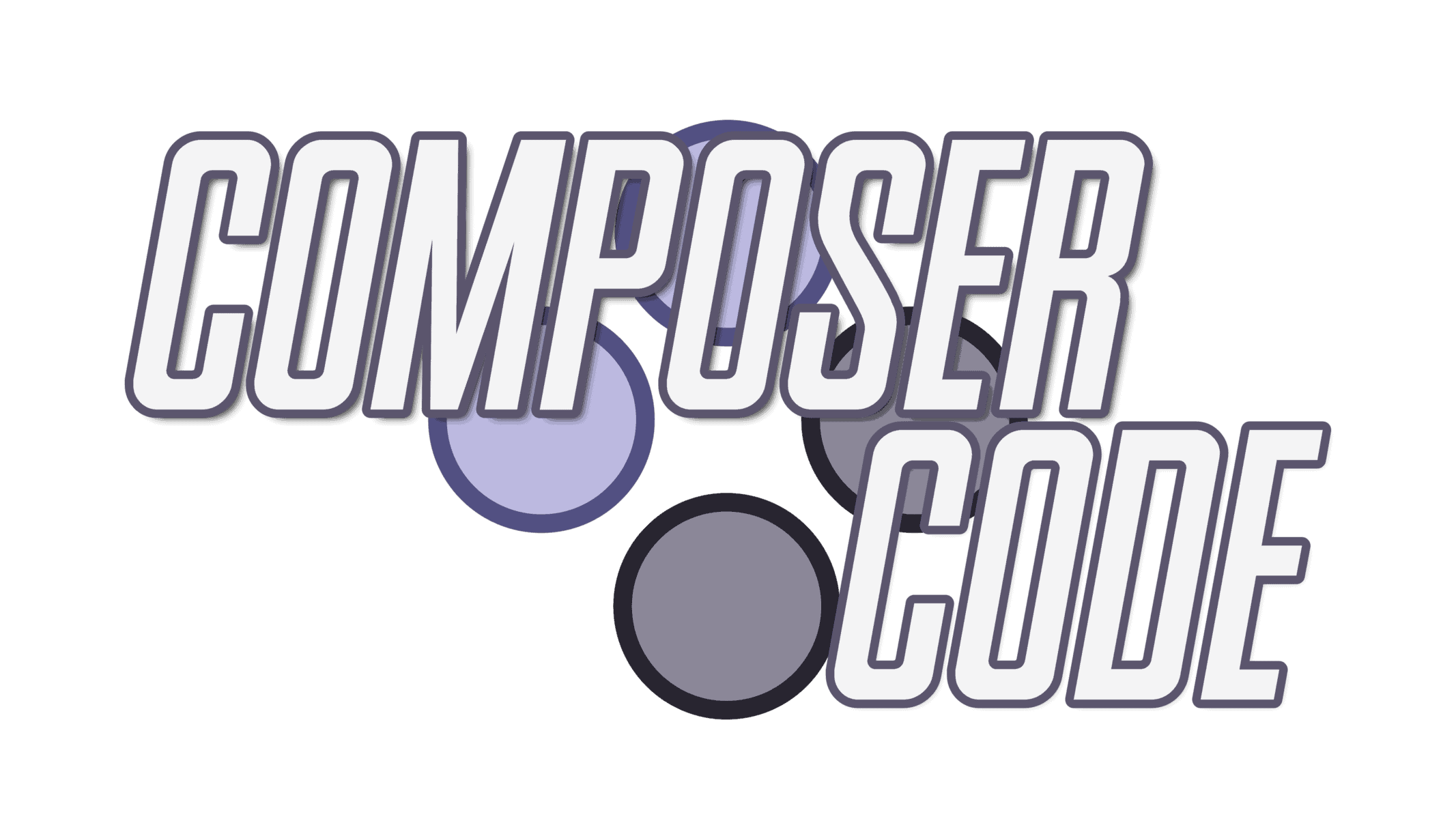
As we finish our trek through the seven diatonic modes of Western music, we finally arrive at the “black sheep” of the family: the Locrian Mode.
The Locrian mode is arguably the darkest of the minor modes. It’s essentially a natural minor scale with a lowered second and fifth scale degree (in addition to the existing ♭6 and ♭7 in the natural minor scale).
It is the seventh mode of the major scale and is built by starting and ending on the seventh scale degree of the major scale.
The scale degrees of the Locrian mode are:
1 – ♭2 – ♭3 – 4 – ♭5 – ♭6 – ♭7
The Locrian mode has a unique sound that is often described as dark, tense, and unstable.
And, well, it is. It’s extremely unstable, thanks to the fact that the tonic chord (the main chord that feels like “home”) is a diminished chord.
This makes it such that even when you technically “resolve” the scale, it never actually feels resolved.
It is not used as frequently as some of the other modes, but it can add a sense of dissonance and tension to a musical piece when used appropriately.
In this post, we’ll talk about:
- How to build the Locrian mode
- The significant of the ♭5 in the Locrian mode (built-in tritone!)
- Examples of the Locrian mode in popular music
But first, let’s review why we study modes in the first place.
Table of Contents
What are musical modes and why are they important?
Musical modes are particular ways to organize musical pitches, not unlike a scale.
Modes are important because they can help us break out of the “major is happy” and “minor is sad” clichés, and allow us to express more nuanced emotions in our music.
In the Western classical tradition, there are seven primary modes, often referred to as diatonic modes:
Many folks will describe modes as just “major scales with different starting notes.” For example, if you take the C major scale…
C – D – E – F – G – A – B – C
…and shift the starting note (tonic) to the seventh degree (B), you would construct a scale in the B Locrian mode:
B – C – D – E – F – G – A – B
It’s all the same notes, just shifted over seven degrees.
This is all well and good, but I don’t think it lends itself well to really learning and internalizing modes (or transposing modes into any other key besides C, because that’s always the one used in these examples).
A better way is to think of modes in two camps: major modes and minor modes.
Major modes are all the modes with a major third, namely:
While minor modes are all the modes with a minor third:
You can think of each mode as a twist or variation of the standard major or minor scale.

The Locrian’s flattened fifth creates a tritone in the tonic chord
The ♭5 scale degree (also known as the tritone) is an important characteristic of the Locrian mode because it adds an inescapable dissonance and tension to the tonic chord.
The tritone is also a characteristic of many other musical modes and scales, such as the diminished scale, the diminished seventh chord, and the diminished triad.
In the Locrian mode, the tritone occurs between the 1 and the ♭5 degrees, which gives the mode its distinctive sound.
The reason this is so significant is because the tonic chord usually feels safe and resolved, even in minor modes. Not so in the Locrian mode, thanks to that tritone interval.
You’ll hear that in action in the following section when we talk about Locrian harmony.
How the Locrian mode changes minor scale triads
Due to the number of flattened intervals in the Locrian mode, the triads are significantly altered from the traditional natural minor scale.
To review, if we were to build triads on each of the degrees in the C minor scale, we’d have these chords at our disposal:

When we introduce the ♭5 and ♭2 in the Locrian mode, many of our chords change. Take a look (and listen):

Notice that the Locrian mode has altered four of our triads:
- The i has become a i°
- The ii° turns into a ♭II
- The v turns into a ♭V
- The ♭VII turns into a ♭vii
Examples of the Locrian mode in action
While it is exceedingly rare to find the Locrian mode consistently used in popular music, it serves a very distinct purpose in the music of film, video games, and other media.
There’s nothing else quite like it that can create such an unstable air of tension and discomfort, which is often a great storytelling tool.
Here are some examples of the Locrian mode in video game music:
Listen to seconds :45 through :59 in this Splatoon 2 tune to hear the Locrian mode utilized in the prominent riff:
My buddy 8-bit Music Theory also posits a very compelling argument that the Locrian mode doesn’t need to be spooky or scary. Check it out:
Final thoughts on the Locrian mode
The Locrian mode is a musical mode that is built on the seventh scale degree of the major scale. It is similar to the natural minor scale, but with a lowered second and fifth scale degree.
The scale degrees of the Locrian mode are:
1 – ♭2 – ♭3 – 4 – ♭5 – ♭6 – ♭7
The Locrian mode has a unique sound that is often described as dark, tense, and unstable. It is not used as frequently as some of the other modes, but it can add a sense of dissonance and tension to a musical piece when used appropriately.
The flattened fifth scale degree is an important characteristic of the Locrian mode because it contributes to the mode’s dissonant and unstable sound.
